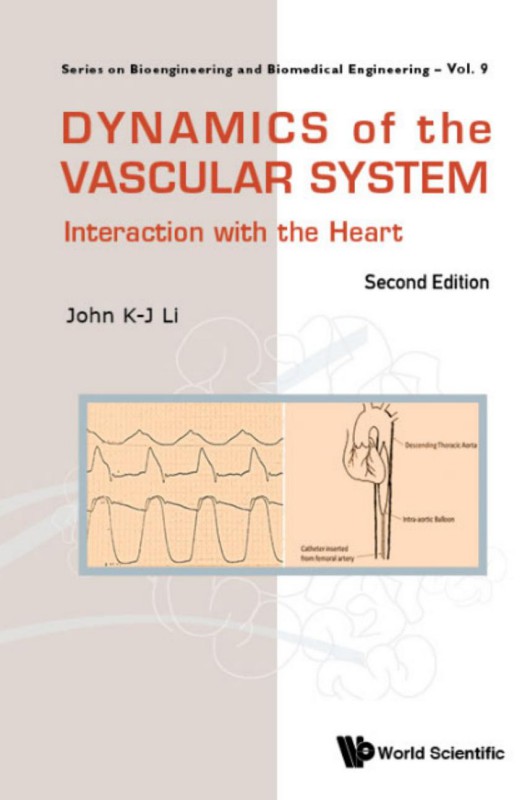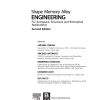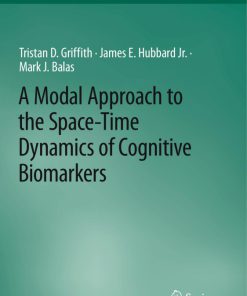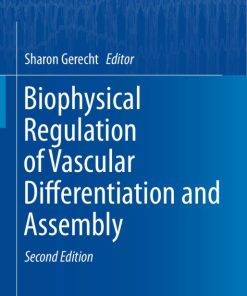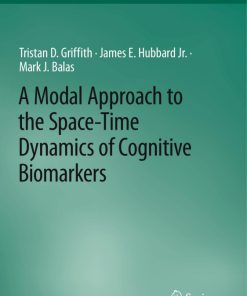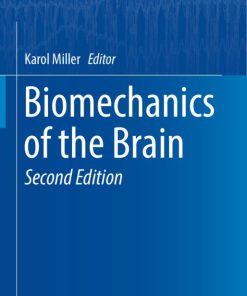(Eboo PDF) Dynamics of the Vascular System Interaction With the Heart 2nd Edition by John Kj Li 9814723762 9789814723763 full chapters
$50.00 Original price was: $50.00.$25.00Current price is: $25.00.
Authors:John K-J Li , Series:Biomedical [78] , Author sort:Li, John K-J , Languages:Languages:eng , Published:Published:Aug 2018 , Publisher:World Scientific
Dynamics of the Vascular System : Interaction With the Heart 2nd Edition by John K-j Li – Ebook PDF Instant Download/DeliveryISBN: 9814723762, 9789814723763
Full download Dynamics of the Vascular System : Interaction With the Heart 2nd Edition after payment.
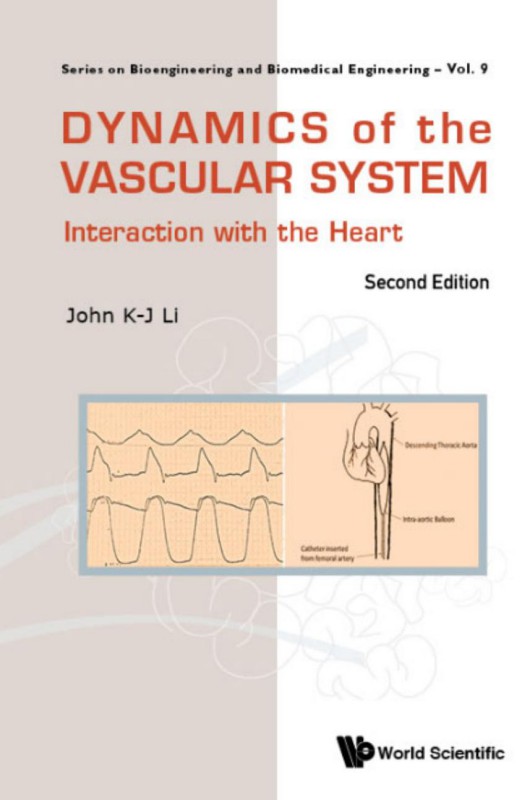
Product details:
ISBN-10 : 9814723762
ISBN-13 : 9789814723763
Author : John K-j Li
The first edition of the book was written employing mathematical techniques to formulate the physical principles involved in the structural and functional correlates of the underlying physiology.This current and self-contained second edition updates many of the new findings since its first edition a decade ago. It also includes a new chapter on the “Interaction with the Heart”. The dynamics of the arterial system, the venous system, the microcirculation and their interaction with the heart are quantitatively described in terms of their structures and functions. Clinical measurements, applications to the cardiovascular field and physiological mechanisms are clearly identified throughout the text. Most importantly, worked examples are provided, such that the readers can appreciate the application aspects of the underlying formulation.
Dynamics of the Vascular System : Interaction With the Heart 2nd Table of contents:
Chapter 1. Historical Background and Book Contents
1.1 Discoveries of the Circulation
1.2 Importance of the Vascular System
1.3 Newer Concepts
1.4 Book Contents
Chapter 2. Vascular Biology, Structure and Function
2.1 Anatomical Organization of the Vasculature
2.1.1 The Closed-loop Circulatory System
2.1.2 The Heart
2.1.3 The Arteries
2.1.4 The Veins
2.1.5 The Microvasculature
2.2 Geometric and Mechanical Properties of Blood Vessels
2.2.1 Geometric Nonuniformity of Blood Vessels
2.2.2 Elastic Nonuniformity of the Blood Vessels
2.2.3 Vascular Stiffness and Elastic Properties
2.3 Functional Properties of Blood
2.3.1 Blood Plasma and Blood Gas
2.3.2 Oxygen Saturation Curves and Hemoglobin
2.3.3 Red Blood Cells, Hematocrit and Blood Volume
2.4 Control Aspects of the Vascular System
2.4.1 Control of the Central Cardiovascular System
2.4.2 Functions of the Baroreceptors
2.4.3 Arterial Chemoreceptors
Chapter 3. Physical Concepts and Basic Fluid Mechanics
3.1 Basic Mechanics and Dimensional Analysis
3.1.1 Mass, Length and Time System and the Pi-theorem of Buckingham
3.1.2 Dimensional Matrix
3.1.3 Biological Scaling and Dynamics Similitude in Vascular Biology
3.1.4 Elastic and Viscoelastic Properties of Blood Vessels
3.2 Frequency Domain and Fourier Analysis
3.2.1 Blood Pressure as a Periodic Function
3.2.2 Trigonometric Fourier Series
3.2.3 Complex Form of Fourier Series
3.2.4 Other Aspects of Frequency Domain Analysis
3.2.4.1 Dirichlet Conditions
3.2.4.2 Line Spectrum and Nyquist Criterion
3.2.4.3 Correlation, Coherence and Power Spectrum
3.3 Fluid Mechanics and Rheology
3.3.1 Steady Flow, the Poiseuille Equation and Flow Velocity Profile
3.3.2 Bernoulli’s Equation and Narrowing Vessel Lumen or Stenosis
3.3.3 Orifice Flow and Torricelli’s Equation
3.3.4 Valvular Cross-section and the Gorlin Equation
3.3.5 Flow and Flow Acceleration
3.3.6 Newtonian Fluid, No-Slip, Boundary Conditions and Entry Length
3.3.6.1 Newtonian Fluid
3.3.6.2 No-Slip Boundary Conditions
3.3.6.3 Laminar and Turbulent Flow
3.3.6.4 Entry Length
Chapter 4. Hemodynamics of Arteries
4.1 Blood Pressure and Flow Relations
4.1.1 Pulsatile Pressure and Flow Waveforms in Arteries
4.1.2 Pressure-flow Relations in the Aorta
4.2 Vascular Impedance to Blood Flow
4.2.1 The Impedance Concept and Formulation
4.2.2 Input Impedance and Characteristic Impedance
4.3 Pulse Wave Propagation Phenomena
4.3.1 The Pulse Wave Propagation Constant
4.3.2 Pulse Wave Velocity and the Foot-to-Foot Velocity
4.3.3 Apparent Propagation Constant and Transfer Function
4.3.4 Determination of the Propagation Constant and Frequency Dependent Pulse Wave Velocity
4.4 Pulse Wave Reflection Phenomena
4.4.1 Influence of Wave Reflections on Pressure and Flow Waveforms
4.4.2 The Reflection Coefficients
4.4.3 The Augmentation Index
4.4.4 Wave Reflection Sites and Multiple Reflections
4.5 Modeling Aspects of the Arterial Circulation
4.5.1 Mathematical Formulations of Pulse Wave Propagation
4.5.2 Linear Theories of Oscillatory Blood Flow in Arteries
4.5.3 The Lumped Model of the Arterial System and the Windkessel Model
4.5.4 Nonlinear Aspects and Pressure-Dependent Arterial Compliance.
Chapter 5. Vascular Branching
5.1 Branching Geometry
5.1.1 Complexity of Vascular Branching
5.1.2 Nonuniform Branching and 3-D Branching Structures
5.1.3 Space-Filling Properties and Modeling
5.2 Fluid Mechanics of Vascular Branching
5.2.1 Branching Geometry and Fluid Dynamic Considerations
5.2.2 Fluid Mechanics Associated with Atherosclerosis and Stenosis
5.3 Pulse Transmission Characteristics at Vascular Branching
5.3.1 Impedance Matching and Wave Reflections
5.3.2 Area Ratio Concept.
5.3.3 Minimum Local Reflections at Vascular Branching Junctions
5.4 Optimization Aspects Applicable to Vascular Branching
5.4.1 Optimizing Vessel Radius and the Cube Law
5.4.2 Optimizing Branching Radii and Angles
Chapter 6. The Venous System
6.1 The Reservoir Properties and Venous Return
6.1.1 Venous Compliance and Reservoir Characteristics
6.1.2 Structural Properties of Veins
6.1.3 Venous Return
6.2 Pressure and Flow Waveforms in Veins
6.2.1 The Normal Pressure and Flow Waveforms in Veins
6.2.2 Respiration Effects on Venous Pressure and Flow Waveforms
6.2.3 Abnormal Venous Pressure and Flow Waveforms
6.3 Modeling and Collapsible Vessel Properties
6.3.1 Steady Flow in Collapsible Tubes
6.3.2 Flow Limitation and Model Experiments
6.3.3 Pulse Wave Transmission Characteristics in Veins
Chapter 7. The Microcirculation
7.1 Structure of the Microcirculation
7.1.1 Functional Organization of the Microvasculature
7.1.2 The Capillary Circulation
7.2 Pressure-Flow Relation and Microcirculatory Mechanics
7.2.1 Flow-Related Mechanical Characteristics of the Microcirculation
7.2.2 Some Pressure-Related Mechanical Characteristics of the Microcirculation
7.3 Pulse Transmission and Modeling Aspects
7.3.1 Pressure and Flow Waveforms in Arterioles and Capillaries
7.3.2 Pulse Transmission Characteristics in the Microcirculation
7.3.3 Modeling Aspects of the Microcirculation
Chapter 8. Hemodynamic Measurements: Invasive and Noninvasive Monitoring
8.1 Catheterization for Blood Pressure Measurement
8.1.1 Fluid-filled Blood Pressure Measurement Systems
8.1.2 Experimental Evaluation of the Frequency Response of Catheter-Pressure Transducer Systems
8.2 Noninvasive Blood Pressure Measurements
8.2.1 Auscultation Measurement of Blood Pressure
8.2.2 Blood Pressure Measurement with the Oscillometric Method
8.2.3 Noninvasive Blood Pressure Monitoring with Tonometer
8.2.4 The Photoplethysmograph (PPG)
8.3 Blood Flow Measurement
8.3.1 Electromagnetic Flowmeter
8.3.2 Ultrasound and Doppler Flow Velocity Measurement
8.3.3 Cardiac Output Measurement with Indicator Dilution Methods and Thermodilution
8.4 Measurement of Vascular Dimensions
Chapter 9. Interaction of the Heart and the Arterial System
9.1 Ventricular Outflow and the Aorta
9.1.1 Ventricular Ejection
9.2 Cardiac Muscle Mechanics and the Force-Velocity-Length Relation
9.2.1 Structure of Myocardial Fibers and the Sliding Filament Theory
9.2.2 Hill Model of Muscle Contraction
9.3 The Pressure-Volume Curve and Contractility of the Heart
9.3.1 Variables Defining the Pressure-Volume Loop
9.3.2 Frank-Starling Mechanism and Ejection Fraction
9.3.3 Cardiac Contractility and Indices of Cardiac Performance
9.4 Heart and the Arterial System Interaction
9.4.1 The Concept of Ventricular and Arterial Elastances
9.4.2 Dynamic Heart-Arterial System Interaction
9.4.3 Left Ventricle-Arterial System Interaction in Heart Failure
9.5 Heart-Arterial System Interaction in the Assisted Circulation
9.5.1 Mechanical Assist Devices and the Intra-Aortic Balloon Pump
9.5.2 Optimization of Intra-Aortic Balloon Pumping: Physiological Considerations
9.5.3 Optimization of Intra-Aortic Balloon Pumping: Modeling Aspects
9.5.4 Optimization of Intra-Aortic Balloon Pumping: Control Aspects
People also search for Dynamics of the Vascular System : Interaction With the Heart 2nd:
functions of the vascular system
diagram of the vascular system
vascular system of the brain
a vascular system disease involving hardening
in the dynamics of blood flow through capillaries

